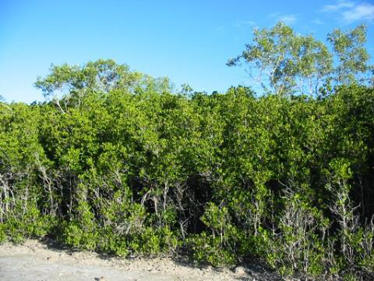Mangroves


Habitat type: Mangroves
Other key words: Intertidal; mangrove forest; mangrove swamp
Description: Mangroves are characterised by trees that are uniquely adapted to tolerate daily or intermittent inundation by the sea.
Apart from stretches of coast dominated by sand masses or steep rocky shore and lacking tidal creeks and rivers, mangroves occur along most of Queensland’s coastline. They form extensive stands in both southern and northern, wetter and drier regions.
Distinctive animals are nurtured in their sheltered waters and mazes of exposed mangrove roots; others live in the underlying mud.
Some animals that use this habitat type: Mangrove jack, barramundi, snapper, blue threadfin, sea mullet and bream, banana prawn, king prawn; pistol shrimp, fiddler crab, mud crab, mud lobster, mangrove oyster, polychaete worms, estuarine crocodile, white-bellied mangrove snake, little file snake, sea snakes, mangrove monitor, rusty monitor, black flying-fox little red flying-fox of which up grey-headed flying-fox, water mouse, Australian white ibis, royal spoonbill, pied cormorant, little black cormorant, striated (mangrove) heron, eastern reef-egret, great-billed heron, whimbrel, chestnut rail, Brahminy kite, white-bellied sea-eagle little kingfisher, collared (mangrove) kingfisher, mangrove robin, mangrove golden whistler, white-breasted whistler, broad-billed flycatcher; shining flycatcher, mangrove gerygone, red-headed honeyeater, varied honeyeater, black butcherbird and Australian pied imperial pigeon.


